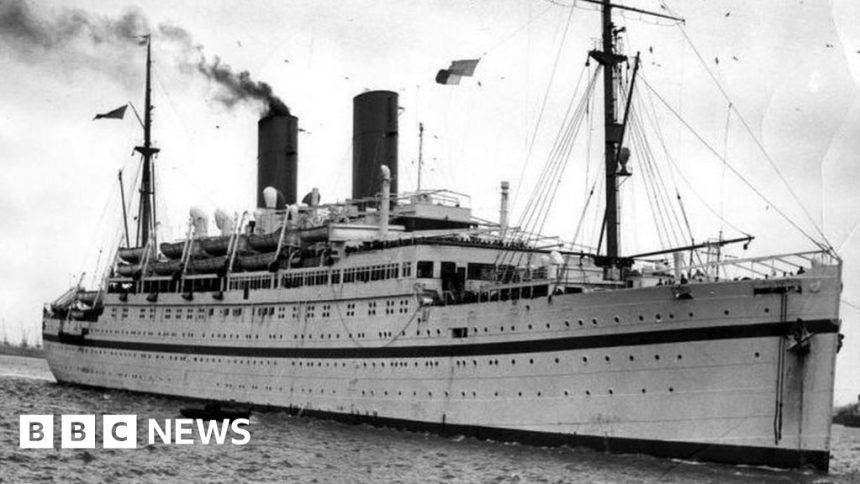Who were the Windrush generation and what is Windrush Day?
-
Published
A look back at life when the Windrush generation arrived in the UK
Windrush Day has been held on 22 June since 2018, to celebrate the contribution Caribbean migrants and their families have made to the UK.
HMT Empire Windrush docked in Tilbury, Essex, in 1948, bringing hundreds of passengers from the Caribbean to the UK.
In 2018, it emerged that the government had not properly recorded the details of people granted permission to stay in the UK, and many were wrongly mistreated.
What is the Windrush generation?
HMT Empire Windrush became a symbol of a wider mass-migration movement.
People in the Caribbean were invited to the UK to help rebuild post-war Britain.
According to the National Archives, which holds the ship’s passenger list,, external there were 1,027 people on board. More than 800 gave their last country of residence as somewhere in the Caribbean.
Several hundred passengers were Jamaican, but others arrived from islands including Trinidad, St Lucia, Grenada and Barbados.
These travellers – and those on other ships which came to the UK until 1971 – became known as the Windrush generation.
Many had served in the British armed forces in World War Two.
Why did the Windrush generation come to Britain?
In 1948, the British Nationality Act gave people from colonies the right to live and work in Britain.
The government needed workers to help fill post-war labour shortages and rebuild the economy.
Caribbean countries were also struggling economically, and job vacancies in the UK offered an opportunity.
Many of those who came became manual workers, drivers, cleaners, and nurses in the newly established NHS.
What was life like for first-generation Windrush migrants?
What is Windrush Day?
Commemoration events have been held on 22 June every year since 2018.
In 2023, the 75th anniversary of the arrival of HMT Windrush was marked with a series of concerts, exhibitions and seminars across the country., external
King Charles, who held a reception at Buckingham Palace to mark the anniversary, hailed the Windrush generation’s “profound and permanent contribution to British life”.
Where are the Windrush generation now?
It is unclear how many people from the Windrush generation are still in the UK, but the number is thought to be in the thousands.
They are among more than 500,000 UK residents who were born in a Commonwealth country and arrived before 1971, according to University of Oxford estimates.
What was the Windrush scandal?
The 1971 Immigration Act gave Commonwealth citizens living in the UK indefinite leave to remain – the permanent right to live and work in the UK.
This included the Windrush generation, but also people from other former British colonies in South Asia and Africa.
“My whole life sunk down to my feet” – Windrush migrant Michael Braithwaite
However, in April 2018, it emerged that the UK Home Office had kept no records of those granted permission to stay, and had not issued the paperwork they needed to confirm their status.
It had also destroyed landing cards belonging to Windrush migrants, in 2010.
Those affected were unable to prove they were in the country legally and were prevented from accessing healthcare, work and housing.
Many were also threatened with deportation.
A review of historical cases also found that at least 83 people who had arrived before 1973 had been wrongly deported.
What did the government do about the Windrush scandal?
Theresa May’s Windrush apology to Caribbean leaders
In April 2018, then-Prime Minister Theresa May apologised for their treatment. An inquiry was announced and a compensation scheme established.
The inquiry, which reported in March 2020,, external said that the scandal was both “foreseeable and avoidable”, and criticised “a culture of disbelief and carelessness” in the Home Office.
The inquiry made 30 recommendations, including:
-
a full Home Office review of the UK’s “hostile environment” immigration policy
-
appointing a migrants’ commissioner
-
establishing a race advisory board
Inquiry author Wendy Williams warned there was a “grave risk” of similar problems happening again without government action.
Then-Home Secretary Priti Patel accepted the recommendations in full.
Then-Home Secretary Suella Braverman announced plans to scrap three recommendations from Wendy Williams’s review
But in January 2023, then-Home Secretary Suella Braverman announced the Home office was dropping three of the commitments:
-
to appoint a migrants’ commissioner responsible for “speaking up for migrants and those affected by the system directly or indirectly”
-
to give the independent chief inspector of borders and immigration new powers
-
to hold events with people affected to “listen and reflect on their stories”
Ms Williams criticised the decision, saying the proposals would have raised the “confidence of the Windrush community”.
How does the Windrush Compensation Scheme work?
The Windrush Compensation Scheme, external was established in April 2019, and about 15,000 people were thought to be eligible.
But the scheme has been consistently criticised for processing delays, low offers, and unfair rejections reversed on appeal.
In 2021, the Home Affairs Committee of MPs found the scheme had itself become a further trauma for those eligible. It said many of those affected were “still too fearful of the Home Office to apply”.
In April 2023, Human Rights Watch said the scheme was “failing” victims, and repeated calls for it to be removed from the Home Office’s control.
In response, the Home Office said it was “committed to righting the wrongs of Windrush”.
The government insisted it would ensure “similar injustices can never be repeated and [was] creating a Home Office worthy of every community it serves”.
According to the latest Home Office update, external, as at February 2024, the scheme had paid more than £83.8m across 2,307 claims.






